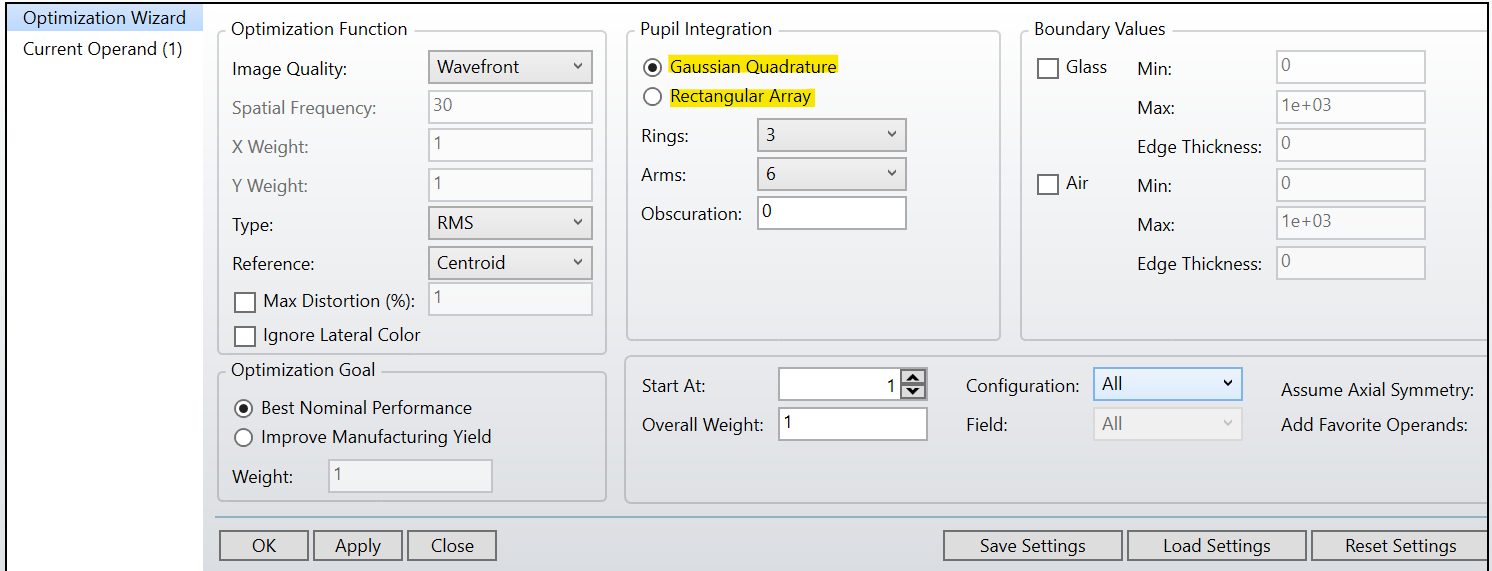How should you choose the number of rings and arms necessary for Gaussian Quadrature? When would you use a rectangular array instead?

How should you choose the number of rings and arms necessary for Gaussian Quadrature? When would you use a rectangular array instead?

Best answer by Sarah.Grabowski
When the Gaussian quadrature algorithm is selected for the pupil integration, the rays are selected via numerical methods, carefully weighting a few rays to most accurately sample the pupil. If you are interested in how this sampling works, check out the help file page “Gaussian Quadrature” for some good references. The amount that the pupil is sampled is specified by the number of arms and rings, which depends on the aberrations in your system. If your limiting aberrations are of order n, then you should use (2*n-1) rings, and 6 arms is usually sufficient. Using more rings or arms than necessary will just needlessly slow down your optimization.
Gaussian quadrature does, however, assume that the pupil is a circle or an ellipse. This means that it is not an appropriate choice for systems where surface apertures may vignette enough rays to change the shape of the pupil, or for systems where the wavefront cannot be modelled by polynomials. In these cases, you should use a rectangular array, which just traces a grid of rays across the pupil. This will be less accurate and require much higher sampling; however, it will clip the rays that hit the apertures. Thus, the Gaussian quadrature algorithm will be more accurate and should be used wherever possible, but the rectangular array is better for systems where there are surface apertures or obscurations.
Enter your E-mail address. We'll send you an e-mail with instructions to reset your password.